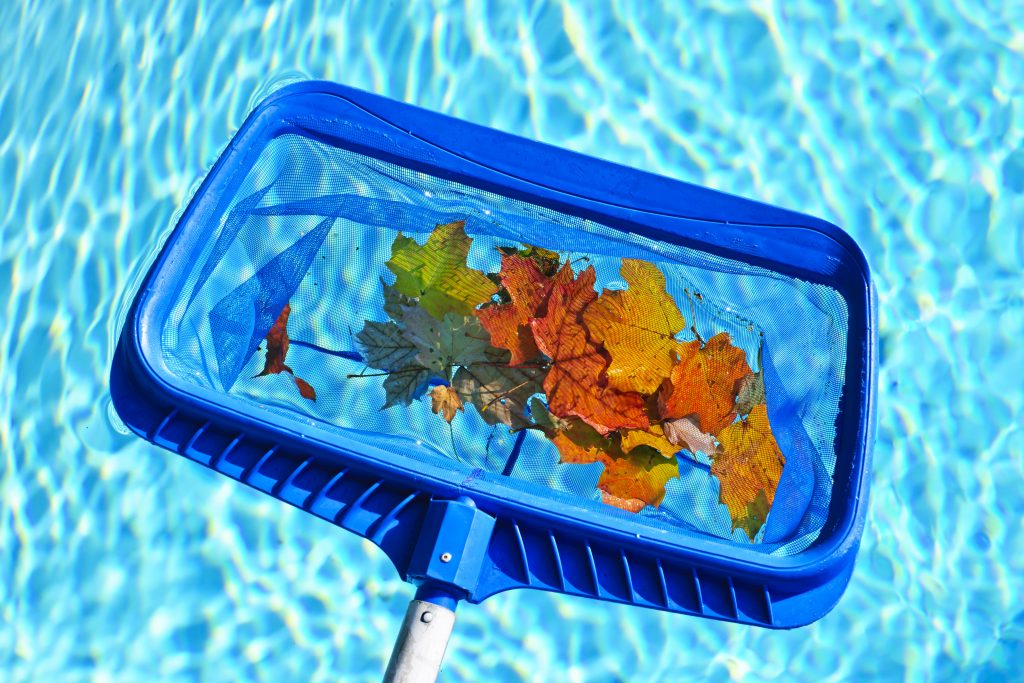Pool maintenance has never been easier with the advancement of built-in technology like pumps and filters. And they’re great… until they’re not. Let’s face it. In Middle Tennessee, weather and other things beyond our control can impact daily life. Whether a water pipe has burst or the weather has knocked out power, these things may render the pump, filter, and other automated equipment used to keep your pool clean and clear temporarily unusable. And, sometimes, equipment just wears out.
If you find yourself with a pool that is no longer automatically maintained, there are a few things you can do to not only keep it usable and enjoyable but also prevent the build-up of residue, debris, and scum. This makes the automated equipment more efficient once it becomes operational again.
1) Remove Debris
It doesn’t take long for organic material and debris to begin collecting in the pool. If a storm has blown through, you probably have a lot more than just a film. If left unchecked, debris can cause staining on the surface of your previously pristine pool. Skim and remove debris first, whether with a net/skimmer/raker, a pool vacuum, or a brush.
2) Sanitize
Chlorine keeps a pool clean, clear, sanitized, and safe. But you know the discomfort of swimming in an over-chlorinated pool or the concern of wondering if it is actually clean and safe. Until the pump and filter are working properly again, it’s best to focus on proper chlorine levels instead of adding other balancing chemicals as well.
While a typical free available chlorine level is recommended at 1-3 parts per million (ppm), without the pump or filter, you should maintain somewhere in the 3-4 ppm range to prevent debris, algae, and other problems from potentially developing. And because you do not have the pump moving the water, use fast-dissolving chlorine for more even distribution throughout the pool.
3) Prevent Algae
If the pump fails during the warm, sticky, humid summer months, it won’t take long for heat-loving algae to begin to bloom in your pool. And once the algae begin to grow, it takes over rapidly! Stop algae in its tracks by adding an anti-algae agent to your pool.
4) Agitate and Circulate
Have you noticed how ponds often have scum, algae, and other growths, yet rivers never do? One is moving, one is stagnant. Stagnant, still water is a breeding ground for gunk. Keeping your pool clean requires keeping the water moving and circulating.
If you still have electricity, you can use a robotic pool cleaner or a submersible pump to clean, move and circulate the water. If you are without power, grab your pool brush! Not only will scrubbing the sides and bottom reduce or prevent algae, but it also causes the water to move and circulate, helping maintain an even level of chlorine throughout the pool.
Getting Back to Good
While there are some things you can do to keep the pool going for a few days without the automated help you’ve come to rely on, no one wants to spend the entire summer scrubbing with a brush and testing, adding, and balancing chlorine levels. If the pump has failed for reasons other than a simple electricity outage, contact Peek Pools. We will come to evaluate the problem and recommend the proper remedy to make the rest of your swimming season relaxing and low-maintenance. Call 615-866-8800 to schedule your appointment and get back to good.
